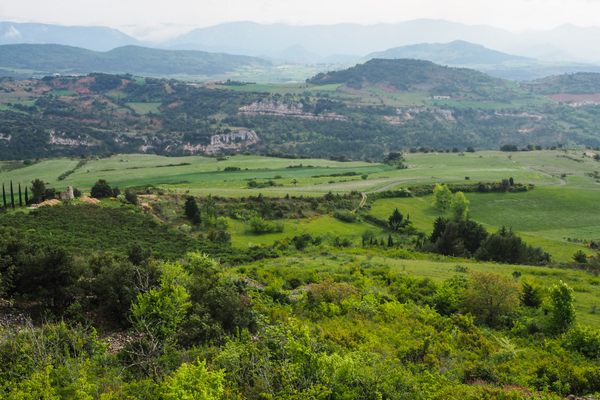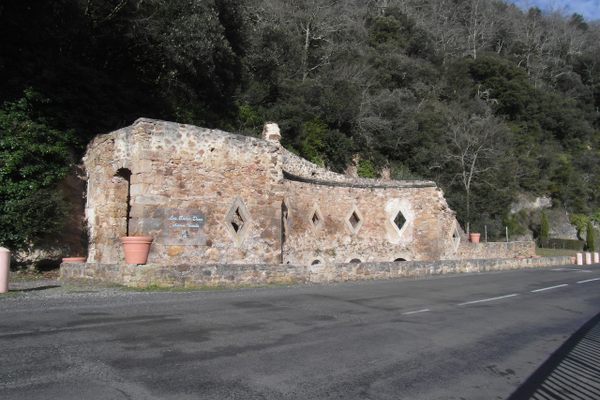L'église de Saint-Salvayre
This mysterious church sits discreetly above the Aude countryside, right in the heart of "Grail Country."
L’église de Saint-Salvayre is a 12th-century church that sits 750 meters above the medieval town of Alet Le Bains in the Aude. Like many places in the region, it plays its part in the Grail legends that radiate from ground zero for conspiracy aficionados, Rennes Le Chateau. Indeed, this rough, minuscule building claims one of the biggest secrets of all.
The church and the adjoining hamlet sit at the end of a rutted, narrow road that climbs inexorably from Alet towards the acres of blue sky above. Your reward on arrival is magnificent views of the Aude’s mountainous terrain. And here sits Saint-Salvayre, an underwhelming cruciform chapel made of rough stone, topped with a tiny Catalan bell tower and decorated with reused sculptures from other long-destroyed churches. Notre Dame, it is not.
Inside, the chapel is undeniably simple, at least on first inspection. But behind the random religious images on the walls, there’s more here than meets the eye.
The altar is an uncharacteristic single stone slab, the floor is rough, possibly Romanesque stone, and you soon discover a peculiar one-meter stone column just to the right of the entrance.
Many have sensed strange energy in the church, primarily from the altar and the stone pillar. Sightseers report tingling or hot and cold sensations that continue long after their visit ends. Powering this phenomenon are maybe some of these conjectures associated with this crepuscular spot.
It’s thought the church was originally a place of pagan or druidic worship that was later sanctified by the Christian faith, like many other pre-Christian religious practices. Chillingly, the altar stone might have once been a pagan sacrificial slab. As for the stone pillar, it remains a mystery.
The chapel also sits on a direct line that links the Cathar Castle in Carcassonne (La Cite) with Rennes Le Chateau, forming part of the sacred geometry that some think crisscrosses “Grail country.”
Nearby, there are several stone monoliths that some say fizz with the same primal energy as the altar. The nearest is 100 meters from the chapel. It’s considered druidic in origin but was converted to support a now-missing Christian cross.
But there’s one colossal legend associated with this place that tops them all. Some believe it’s where Jesus Christ’s crucifixion-ravaged heart finally gave out as he traveled with Mary Magdalene to visit their daughter Sarah, who lived near Narbonne. He is reported to have been interred close by. Is this why this place is called “Our Saviour” and a local small hill is called “The Dead Man?”
L’église de Saint-Salvayre, like many places in the Aude, is surrounded by highly speculative myths and legends. But unlike some more easily accessible places, Saint-Salvayre has an authentic, untouched feel far away from the customary Grail hangouts. And it’s difficult to escape the feeling the chapel and ramshackle hamlet that hosts it do have an elusive weird energy about them and are more than a tad creepy, too.
Know Before You Go
You'll find the road to Saint-Salvayre on the main route through Alet-Le-Bains. The road surface makes it a challenging 6km drive with some very narrow sections and rough going at times, so go easy. Once you arrive, there's parking but no other facilities, so take some refreshments to help you recover from your inevitable disquiet.






















Follow us on Twitter to get the latest on the world's hidden wonders.
Like us on Facebook to get the latest on the world's hidden wonders.
Follow us on Twitter Like us on Facebook